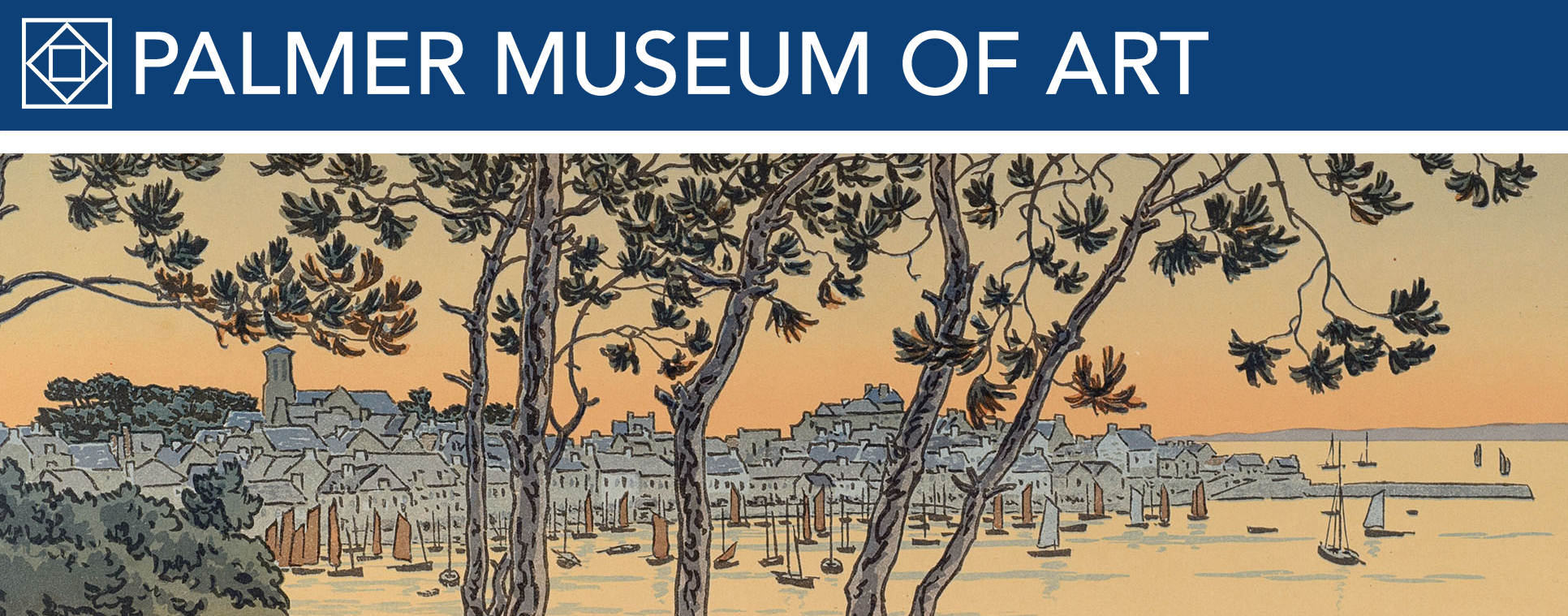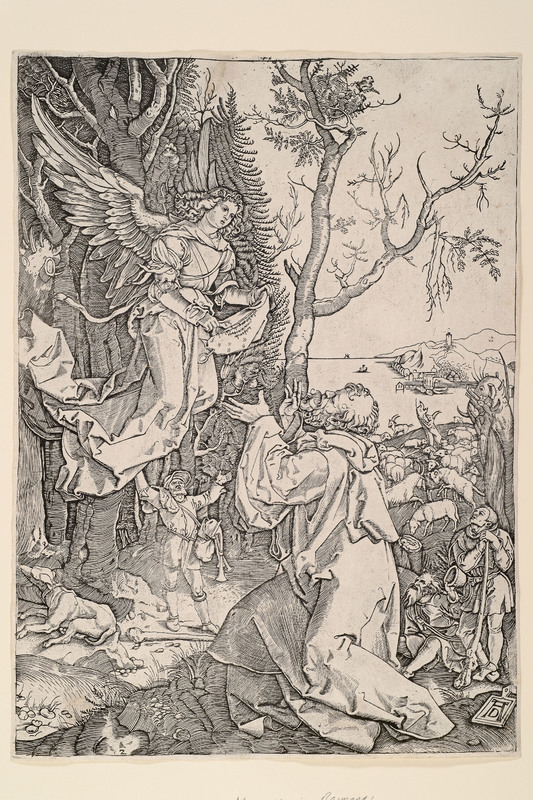Angel Appearing to Joachim From the Life of the Virgin
Item
Title
Angel Appearing to Joachim
From the Life of the Virgin
From the Life of the Virgin
Creator
Marcantonio Raimondi
Italian, c. 1470–c. 1527
After Albrecht Dürer
German, 1471–1528
Italian, c. 1470–c. 1527
After Albrecht Dürer
German, 1471–1528
Date
c. 1505
Materials
Engraving
Measurements
Image: 11-3/8 x 8-1/8 in. (29.1 x 20.7 cm), sheet: 11-5/8 x 8-15/16 in. (29.4 x 21.1 cm)
Description
Prior to settling in Rome, where his reputation as one of the most important printmakers of the Renaissance was won through the many reproductive engravings he made after designs by Raphael, Bolognese-born Marcantonio practiced for several years in Venice. There, between roughly 1506 and 1508 he engraved, probably on commission, numerous copies after Dürer’s prints, including all of the woodcuts the German master had published up to that time for his Life of the Virgin series. As can be discerned the print on view here, Marcantonio’s desire for verisimilitude extended to imitating the original medium—it’s an engraving, but the sheet actually reads as though it was a woodcut—and duplicating Dürer’s monogram in the lower right corner.
According to Giorgio Vasari’s Lives, when word of Marcantonio’s efforts reached Nuremberg, Dürer hastened to Venice to petition the Senate for an order of cease and desist. The story may be apocryphal (the Venetian Senate archives contain no mention of the petition); however, unsanctioned copies presented a serious problem for the artist throughout his career. In 1511, as plans to publish his Life of the Virgin in book form progressed, Dürer secured a privilege—an early form of copyright—from the Holy Roman Emperor, of which he belligerently gave notice in a colophon appended to the final engraving in the series:
"Hold! You crafty ones, strangers to work, and pilferers of other men’s brains. Think not rashly to lay your thievish hands upon my works. Beware! Know you not that I have a grant from the most glorious Emperor Maximillian, that not one throughout the imperial dominion shall be allowed to print or sell fictitious imitations of these engravings? Listen! And bear in mind that if you do so, through spite or through covetousness, not only will your goods be confiscated, but your bodies also placed in mortal danger."
According to Giorgio Vasari’s Lives, when word of Marcantonio’s efforts reached Nuremberg, Dürer hastened to Venice to petition the Senate for an order of cease and desist. The story may be apocryphal (the Venetian Senate archives contain no mention of the petition); however, unsanctioned copies presented a serious problem for the artist throughout his career. In 1511, as plans to publish his Life of the Virgin in book form progressed, Dürer secured a privilege—an early form of copyright—from the Holy Roman Emperor, of which he belligerently gave notice in a colophon appended to the final engraving in the series:
"Hold! You crafty ones, strangers to work, and pilferers of other men’s brains. Think not rashly to lay your thievish hands upon my works. Beware! Know you not that I have a grant from the most glorious Emperor Maximillian, that not one throughout the imperial dominion shall be allowed to print or sell fictitious imitations of these engravings? Listen! And bear in mind that if you do so, through spite or through covetousness, not only will your goods be confiscated, but your bodies also placed in mortal danger."
Source
Palmer Museum of Art, The Pennsylvania State University
Identifier
2014.74
Rights
This image is posted publicly for non-profit educational uses, excluding printed publication. Other uses are not permitted.

